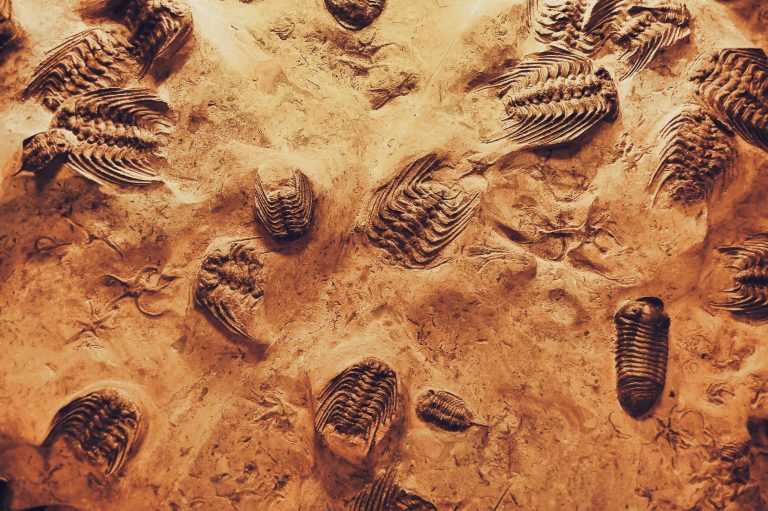
Ammonite (Peru)
An early cephalopod with a hard, coiled shell. This predatory invertebrate lived only in the outer portion of the shell, which ranged from 1″ to as large as 9ft. in diameter. One of the most common fossils of the Mesozoic Era, they became extinct 65 million years ago.
Brachiopod (Morocco)
This bottom-dwelling marine invertebrate had two protective shells with a connecting hinge but, unlike the clam, its shells were dis-similar. They evolved during the Cambrian Period 570 million years ago. Although many became extinct 438 million years ago, there are about 260 living species in the world today.
Fern (Pottsville Formation, Pennsylvania)
A non-flowering plant with fronds consisting of many small leaflets. They were plentiful during the Mesozoic Era, where they thrived in warm, moist environments. Many species of ferns exist today.
Gastropod (Turritella mortoni; Iron County, Utah)
A mollusk with a sucker-like foot. Other soft-bodied invertebrates in this class include the garden snail, sea snail, and slug.
Trilobite (Dycalmines; Sahara Desert, Morocco and Trilobite) (Scutellum; Morocco)
Examples of an early invertebrate with a segmented body and an exoskeleton. They dominated the environment during the Cambrian Period 540 to 500 million years ago.

